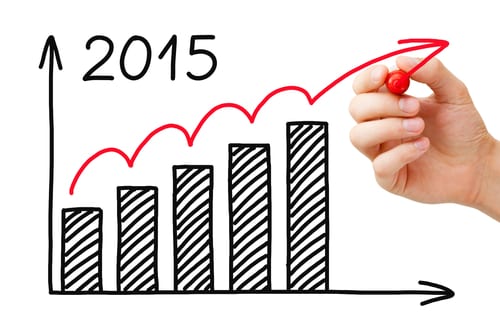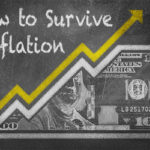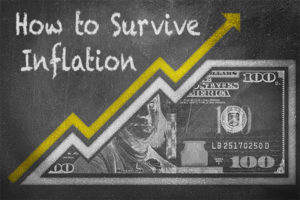2014 Great Year For U.S. Economy, Can We Repeat In 2015?
By most accounts, the United States economy had a glowing year in 2014.
Unemployment was down, spending was up, housing prices continued to bounce back and gas prices plunged to rates we never thought we’d see again.
Then again, millions of Americans are still out of work, consumer debt reached a record high, Millennials still have trouble getting approved for a mortgage and somehow, the International Monetary Fund’s measuring stick for economies, (a formula so complicated, no one could understand it), said China overtook the U.S. as No. 1 economy in the world.
Still, when looking at the 2014 economic performance in the U.S., most people were satisfied. The economy grew at better than 3 percent and consumer confidence was its highest in seven years. Your view, as always, depends on how well you managed things like employment, housing, food prices, transportation and the other areas that fall under personal finance.
Here is a recap of some of the good and bad news in eight areas of personal finance that might help steer your financial behavior through the 2015 economy.
Employment
Good news: The economy added more than 240,000 jobs in December, the 11th straight month where gains exceeded 200,000. More than 1.7 million people were added to payrolls in 2014. Unemployment dropped to 5.7 percent, a long way from 10 percent peak in October 2009.
Bad news: There are still 9.1 million Americans unemployed, including 2.8 million who have been out of work for 27 weeks or longer. Many of the long-term unemployed have been out of work so long or don’t want to be retrained, so they simply have given up on the idea of finding a job.
Bottom line: The run of 200,000 plus jobs per month is expected to continue. Retail, construction, healthcare, and business services are hiring. Finding something close and compatible is a challenge, but there are jobs.
Wages
Good news: Approximately 3.6 million people already got a raise this year because the minimum wage went up in 21 states. There are 29 states with higher minimum wage requirements than the federal rate of $7.25 an hour. The top 200 CEO’s in the country earned, on average, $11.5 million so they’re still good.
Bad news: Wages for the people in the middle of the workforce are stagnant. Way stagnant. The November median household income (half above, half below) was $53,880. That is a 2 percent gain this year, but still far less than the median household income of $57,128 (adjusted for inflation) in 2000.
Bottom line: Stay where you are and you can expect a 3 percent bump this year. If you want more, take on the risk of starting your own business … or become a CEO.
Housing
Good News: The value of all homes went up $1.7 trillion, which is a very good thing. The increase gives homeowners some breathing room, especially the ones who took a bath during the Great Recession when their home mortgages went underwater. They might be closer to break-even status now.
Bad news: Sales weren’t all that great on new homes (up 1.8 percent) and existing homes (down four percent) as prices rose in 2014. Mortgage rates, which have been at historic lows, are moving toward five percent in 2015. First-time buyers are still encountering problems getting a mortgage.
Bottom line: Buying still beats renting. It’s tough to plant roots when you live in an apartment. Get a house and own a piece of your community.
Food Prices
Good news: It rained this winter in California. That is the No. 1 food-producing state in the country (has been for 50 years now) and when the weather cooperates, fruits and vegetables are plentiful … and cheap. Reduced gas prices should ease delivery costs and lower prices on many foods.
Bad news: It needs to rain more in California. The state is still in the throes of a 2-year drought. That’s one reason the price for staples like milk (up 21 percent), eggs (up 14 percent), beef (up 12 percent) and pork (up nine percent) increased dramatically in 2014.
Bottom line: The forecast for 2015 is better weather in California, meaning more rain, especially this winter. On this issue, what’s good for California is good for the nation.
Automobiles
Good news: People are loving cars and trucks again. Sales rose to 16.5 million in 2014, the first time they’ve gone over 16 million since 2006. Even luxury automobiles are popular with sales up 15 percent. And the top 3 sellers are all trucks: Ford F-150, Chevy Silverado and Dodge Ram 1500.
Bad news: Spending on cars is up 35 percent, nearly all of it on new cars. Debt on auto loans has never been higher, reaching a record $946 billion. Lower fuel prices made gas guzzlers like trucks and SUVs even more popular than ever.
Bottom line: Be careful how much of your money you invest in a new car. For the record, buying a car is not considered “an investment” since it declines in value the minute you drive it off the lot.
Credit Cards
Good news: It’s getting easy to get a card again and people are taking advantage of it. The average household owes $6,802 on its credit cards, well under the all-time high of $8,431 they owed in 2008. Unfortunately, that is the best that can be said.
Bad news: Card holders went on a spending binge in 2014. Credit card debt was up in all four quarters, highlighted by $15.94 billion spent in Q3, a 35 percent leap over a year ago. Total credit card debt accumulated in 2014 was up $36 billion, more than double the $16.4 billion it rose in 2013.
Bottom line: We’re inching closer to the $8,300 mark on credit card debt that is the tipping point where delinquent payments skyrocket because minimum payments are no longer sustainable.
Student Loans
Good news: Um … hmmmm … uh, give me a minute … still thinking … OK, there really isn’t any good news to report. Wait! I found something: If you get a college diploma with all those loans, you should earn an extra $1 million over the course of your working career.
Bad news: Where to begin? More than 70 percent of graduates have some student loan debt. The average is $34,000 almost twice what it was 10 years ago. It took 23 years for students to borrow the first $100 billion. Now, they borrow more than $100 billion in one year. Everyone is borrowing. The fastest rising segment of borrowers is students from upper middle class families. Should I continue?
Bottom line for 2015: If you plan to attend college, plan to have a job, plan to ask your parents for money and plan to take out a loan. Sorry, but that’s about the only plan that works these days.
Gas Prices
Good news: Americans saved $14 billion on gas in 2014. Prices fell every single day the last 96 days of 2014 and continued to fall the first five days of 2015. Just last April, the national average was $3.70 a gallon. It was $2.26 a gallon on Dec. 31, a 39 percent drop with no end in sight.
Bad news: Oil companies are old hands at creating a craving, then making consumers pay for their addiction. Americans have been drunk on low gas prices before and there is little doubt they’ll do it again. It will be no surprise if the pump price goes up this spring and is back in the $3 range by summer.
Bottom line: The average price in Missouri and Oklahoma went under $2 in late December and several states seem ready to follow. Pump it while you can!
Sources:
- Arends, B. (2014, December 4) It’s official: America is now No. 2. Retrieved from http://www.marketwatch.com/story/its-official-america-is-now-no-2-2014-12-04
- Mutikani, L. (2014, December 31) U.S. jobless claims rise, but labor market still firming. Retrieved from http://www.reuters.com/article/2014/12/31/us-usa-economy-unemployment-idUSKBN0K90RK20141231
- Green, G., Coder, J. (2014, November) Household Income Trends November 2014. Retrieved from http://www.sentierresearch.com/reports/Sentier_Household_Income_Trends_Report_November2014_12_23_14.pdf
- Weise, K. (2014, December 29) Some 3.6 Million People Are About to Get a Raise. http://www.businessweek.com/articles/2014-12-29/minimum-wages-to-increase-in-several-states-cities-in-2015#r=lr-sr
- NA, (2014, November) Food Price Outlook 2014-15. Retrieved from http://www.ers.usda.gov/data-products/food-price-outlook/summary-findings.aspx
- Martinez, M. (2015, January 5) 2014 car sales best in U.S. since ’06. Retrieved from http://www.detroitnews.com/story/business/autos/2015/01/05/automakers-report-december-sales/21277199/
- Deritis, C. (2014, December 24) Auto Loans and Credit Card Balances Expand. Retrieved from https://www.economy.com/home/products/samples/credit-forecast-household-credit-report.pdf
- Papadimitriou, O. (ND). 2014 Credit Card Debt Study. Retrieved from http://www.cardhub.com/edu/2014-credit-card-debt-study/
- NA. (2014, December 31) Americans Saved $14 Billion On Gasoline This Year. Retrieved from http://fuelgaugereport.aaa.com/americans-saved-14-billion-on-gasoline-this-year/
- You will need Adobe Reader to view the PDF Download Adobe Reader


















